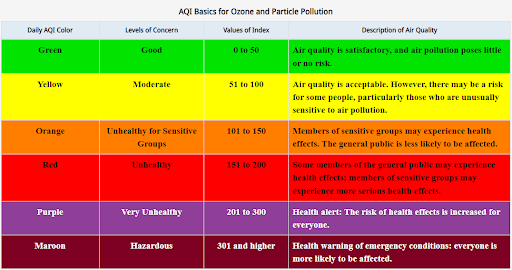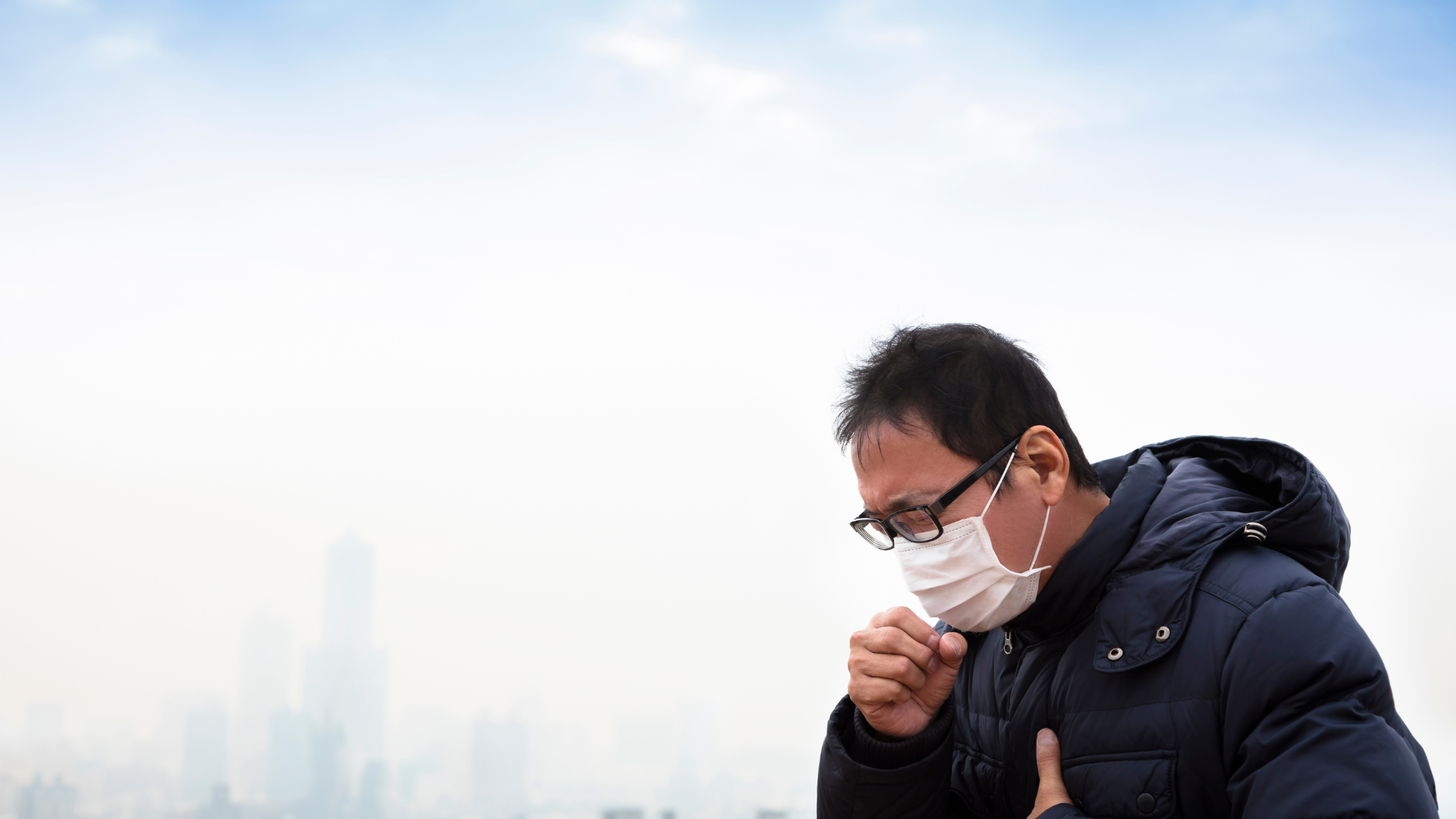Air Quality refers to the amount of pollutants in the air. These pollutants can include particulate matter (such as dust, dirt, and smoke), ozone, sulfur dioxide, nitrogen dioxide, carbon monoxide, and volatile organic compounds such as lead.
The quality of the air we breathe can have significant impacts on our health and the environment. Poor air quality can lead to respiratory issues, cardiovascular problems, and other health problems, particularly for vulnerable populations such as children, the elderly, and individuals with pre-existing conditions. Monitoring and improving air quality is important for protecting public health and the environment.

The Air Quality Index (AQI) is used to measure and report air quality. There are six categories of air quality: Good, Moderate, Unhealthy for Sensitive Groups, Unhealthy, Very Unhealthy, and Hazardous.
- Good: Air quality is good and poses little or no risk.
- Moderate: Air quality is acceptable; however, there may be some health concern for a small number of unusually sensitive people. While EPA cannot identify these people, studies indicate that there are people who experience health effects when air quality is in the moderate range.
- Unhealthy for Sensitive Groups: When air quality is at this level, sensitive groups such as those with heart or lung disease, older adults, and children may experience health effects during outdoor activities. However, the general population is unlikely to be affected.
- Unhealthy: When air quality is in this range, everyone who is active outdoors may experience effects. Members of sensitive groups are likely to experience more serious effects.
- Very Unhealthy: When air quality is in this range, it is expected that there will be widespread effects among the general population and more serious effects in members of sensitive groups.
- Hazardous: Air quality in this range triggers health warnings of emergency conditions by media outlets. The entire population is more likely to be affected by serious health effects.
Health Effects

Ground-level ozone and airborne particles are the two pollutants that pose the greatest threat to our health. When exposed, people with heart or lung diseases and older adults are more at risk of hospital and emergency room visits or, in some cases, even death from heart or lung disease. Even if you are healthy, you may experience temporary symptoms from exposure to elevated levels of particles. Symptoms may include:
- irritation of the eyes, nose and throat;
- coughing; phlegm;
- chest tightness; and
- shortness of breath.
Ozone (found in smog) and particle pollution (found in haze, smoke, and dust) can increase asthma symptoms in adults and children. It can also negatively impact individuals with lung diseases. Air pollution can trigger heart attacks, stroke, and irregular heart rhythms—especially in people who are already at risk for these conditions.
If there is unhealthy or hazardous air quality in your area, it is important to take steps to protect yourself and your family. Here are some steps you can take to protect yourself and your loved ones:
- Stay informed by checking air quality alerts and forecasts.
- Have a plan in place for dealing with poor air quality, including knowing how to access clean air or medical care if needed.
- Stay indoors if possible and keep doors and windows closed to prevent outdoor air from entering your home.
- Use a clean air filter with a Minimum Efficiency Reporting Value (MERV) rating of 13 to remove small particles from wildfire smoke.
- Limit outdoor activities, especially strenuous ones, to reduce your exposure to polluted air.
- Wear a properly fitted N95 mask to reduce your exposure to harmful particles in the air.
- If you do not have air conditioning or a way to filter indoor air, seek shelter in a location with cleaner air, such as a public building with air conditioning.
- Follow any advice or recommendations from local health authorities regarding air quality and health precautions.
- Take extra precautions to protect vulnerable populations, such as children, the elderly, and individuals with respiratory or heart conditions.
- Drink plenty of water to help your body cope with the effects of poor air quality.
- Reduce sources of indoor pollution, such as smoking, using candles or incense, and burning wood or other materials indoors.

We encourage everyone to get involved and help reduce air pollutants by taking these simple steps:
- Use public transit, carpool, walk, or bike when possible.
- Use energy-efficient appliances and light bulbs, turn off lights and electronics when not in use, and properly insulate your home to reduce energy consumption.
- Trade in your charcoal grill for gas or electric instead.
- Avoid burning wood, leaves, and other materials, as this can release harmful pollutants into the air.
- Support clean energy sources, such as solar and wind power, by using them in your home or advocating for their use in your community.
- Reduce waste by using reusable products, recycling materials, and composting organic waste.
- Use eco-friendly yard care products.
- Avoid outdoor activities that contribute to air pollution, such as using gasoline-powered lawn equipment on high-pollution days.
